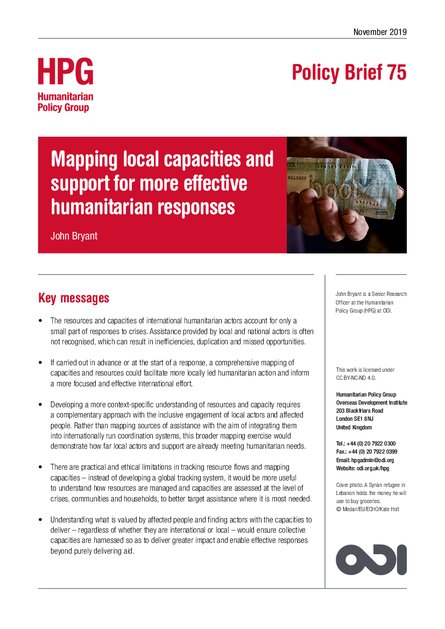
The capacities of local actors and resources that flow to crisis-affected people are not consistently recognised or monitored. This policy brief explores the implications that a fuller understanding could have for the humanitarian sector.
Key messages
- The resources and capacities of international humanitarian actors account for only a small part of responses to crises. Assistance provided by local and national actors is often not recognised, which can result in inefficiencies, duplication and missed opportunities.
- If carried out in advance or at the start of a response, a comprehensive mapping of capacities and resources could facilitate more locally led humanitarian action and inform a more focused and effective international effort.
- Developing a more context-specific understanding of resources and capacity requires a complementary approach with the inclusive engagement of local actors and affected people. Rather than mapping sources of assistance with the aim of integrating them into internationally run coordination systems, this broader mapping exercise would demonstrate how far local actors and support are already meeting humanitarian needs.
- There are practical and ethical limitations in tracking resource flows and mapping capacities – instead of developing a global tracking system, it would be more useful to understand how resources are managed and capacities are assessed at the level of crises, communities and households, to better target assistance where it is most needed.
- Understanding what is valued by affected people and finding actors with the capacities to deliver – regardless of whether they are international or local – would ensure collective capacities are harnessed so as to deliver greater impact and enable effective responses beyond purely delivering aid.
